REMEMBER HOW MUCH YOUR FATHER LOVES YOU...
My dear father living in Kota Baru, Kelantan, always tells me to look after myself as he is "old and no longer able to look after me".He does not know it but each time he says that, tears flow from my eyes and I try my best to sound normal as I reply "Yes, Pa, don't worry, I will look after myself."
Mind you, I am never a prodigal son as I never squander what my parents gave me!
The Prodigal Son c. 1669 oil on canvas, 262 x 205 cm.
The Hermitage Museum, St Petersburg
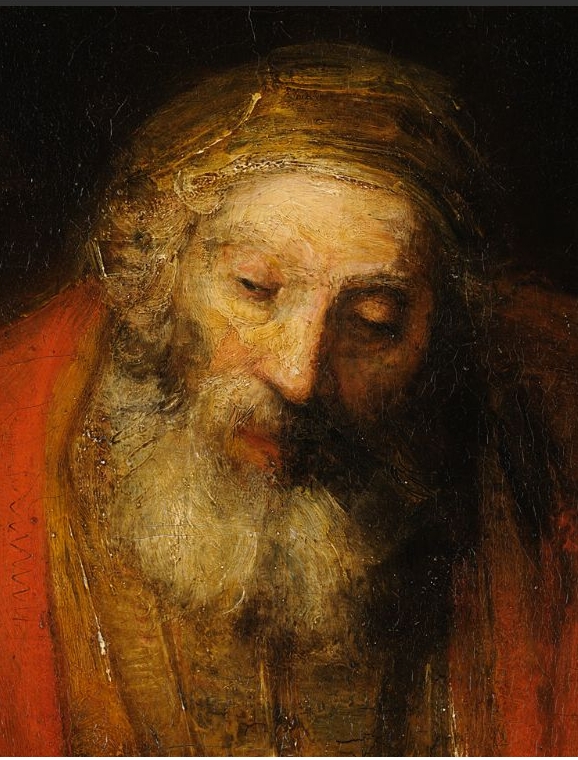
Rembrandt's Prodigal Son

Web
Gallery of Art
Rembrandt's final word
is given in his monumental painting of the Return of the Prodigal Son.
Here he interprets the Christian idea of mercy with an extraordinary solemnity,
as though this were his spiritual testament to the world. It goes beyond the
works of all other Baroque artists in the evocation of religious mood and human
sympathy. The aged artist's power of realism is not diminished, but increased
by psychological insight and spiritual awareness. Expressive lighting and
colouring and the magic suggestiveness of his technique, together with a
selective simplicity of setting, help us to feel the full impact of the event.
The main group of the
father and the Prodigal Son stands out in light against an enormous dark
surface. Particularly vivid are the ragged garment of the son, and the old
man's sleeves, which are ochre tinged with golden olive; the ochre colour
combined with an intense scarlet red in the father's cloak forms an
unforgettable colouristic harmony. The observer is roused to a feeling of some
extraordinary event.
The son, ruined and repellent, with his bald head and the
appearance of an outcast, returns to his father's house after long wanderings
and many vicissitudes. He has wasted his heritage in foreign lands and has sunk
to the condition of a swineherd. His old father, dressed in rich garments, as
are the assistant figures, has hurried to meet him before the door and receives
the long-lost son with the utmost fatherly love.
The occurrence is devoid
of any momentary violent emotion, but is raised to a solemn calm that lends to
the figures some of the qualities of statues and gives the emotions of a
lasting character, no longer subject to the changes of time. Unforgettable is
the image of the repentant sinner leaning against his father's breast and the
old father bending over his son. The father's features tell of a goodness
sublime and august; so do his outstretched hands, not free from the stiffness
of old age. The whole represents a symbol of all homecoming, of the darkness of
human existence illuminated by tenderness, of weary and sinful mankind taking
refuge in the shelter of God's mercy.
The Parable of the Return of the Prodigal Son in Painting
From the Renaissance the
numbers shown widened slightly, and the various scenes – the high living,
herding the pigs, and the return – of the Prodigal Son became the clear
favorite. Albrecht Dürer made a famous engraving of the Prodigal Son
amongst the pigs (1496), a popular subject in the Northern Renaissance.
Rembrandt depicted several scenes from the parable, especially the final
episode, which he etched, drew, or painted on several occasions during his
career. At least one of his works, The Prodigal Son in the Tavern, a
portrait of himself as the Son, reveling with his wife, is like many artists'
depictions, a way of dignifying a genre tavern scene - if the title was indeed
the original intention of the artist.
The Parable of the Prodigal Son
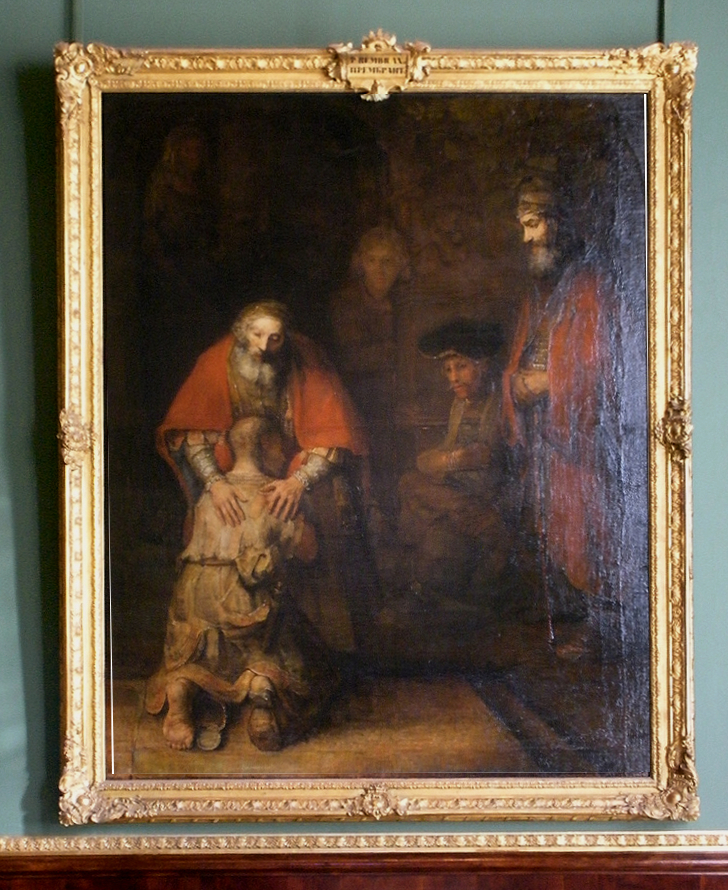
The Prodigal Son,
also known as the Lost Son, is one of the best known parables of Jesus. It
appears only in the Gospel of Luke in the New Testament of
the Bible. By tradition, it is usually read on the third Sunday of Lent. It is
the third and final member of a trilogy, following the Parable of
the Lost Sheep and the Parable of the Lost Coin.Of the thirty or
so parables in the canonical Gospels, it was one of the four that were shown in
medieval art almost to the exclusion of the others, but not mixed in with the
narrative scenes of the Life of Christ (the others were the Wise
and Foolish Virgins, Dives and Lazarus, and the Good
Samaritan. The Labourers in the Vineyard also appears in Early
Medieval works).
The parable begins with
a young man, the younger of two sons, who asks his father to give him his share
of the estate. The parable continues by describing how the younger son travels
to a distant country and wastes all his money in wild living. When a famine
strikes, he becomes desperately poor and is forced to take work as a swineherd.
When he reaches the point of envying the pigs he is looking after, he finally
comes to his senses:
But when he came to
himself he said, "How many hired servants of my father's have bread enough
to spare, and I'm dying with hunger! I will get up and go to my father, and
will tell him, 'Father, I have sinned against heaven, and in your sight. I am
no more worthy to be called your son. Make me as one of your hired
servants.'"
He arose, and came to
his father. But while he was still far off, his father saw him, and was moved
with compassion, and ran, and fell on his neck, and kissed him.
– Luke 15:17-20, World English Bible
The son does not even
have time to finish his rehearsed speech, since the father calls for his
servants to dress him in a fine robe, a ring, and sandals, and slaughter the
"fattened calf" for a celebratory meal. The older son, who was at
work in the fields, hears the sound of celebration, and is told about the
return of his younger brother. He is not impressed, and becomes angry:
But he answered his
father, "Behold, these many years I have served you, and I never disobeyed
a commandment of yours, but you never gave me a goat, that I might celebrate
with my friends. But when this, your son, came, who has devoured your living with
prostitutes, you killed the fattened calf for him."
– Luke 15:29-30, World English Bible
The parable concludes
with the father explaining that because the younger son had returned, in a
sense, from the dead, celebration was necessary:
"But it was appropriate
to celebrate and be glad, for this, your brother, was dead, and is alive again.
He was lost, and is found."
– Luke 15:32, World English Bible
– Luke 15:32, World English Bible
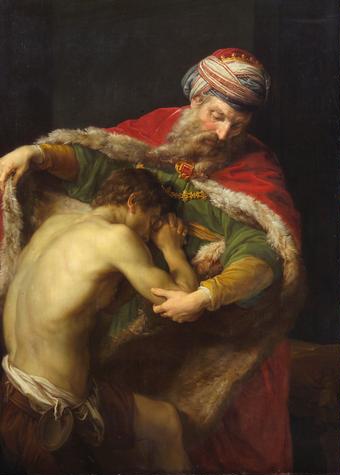
Return of the Prodigal Son
Pompeo Batoni
1773
oil on canvas, 138 x 100,5 cm
Kunsthistorisches Museum, Vienna
Pompeo Batoni
1773
oil on canvas, 138 x 100,5 cm
Kunsthistorisches Museum, Vienna
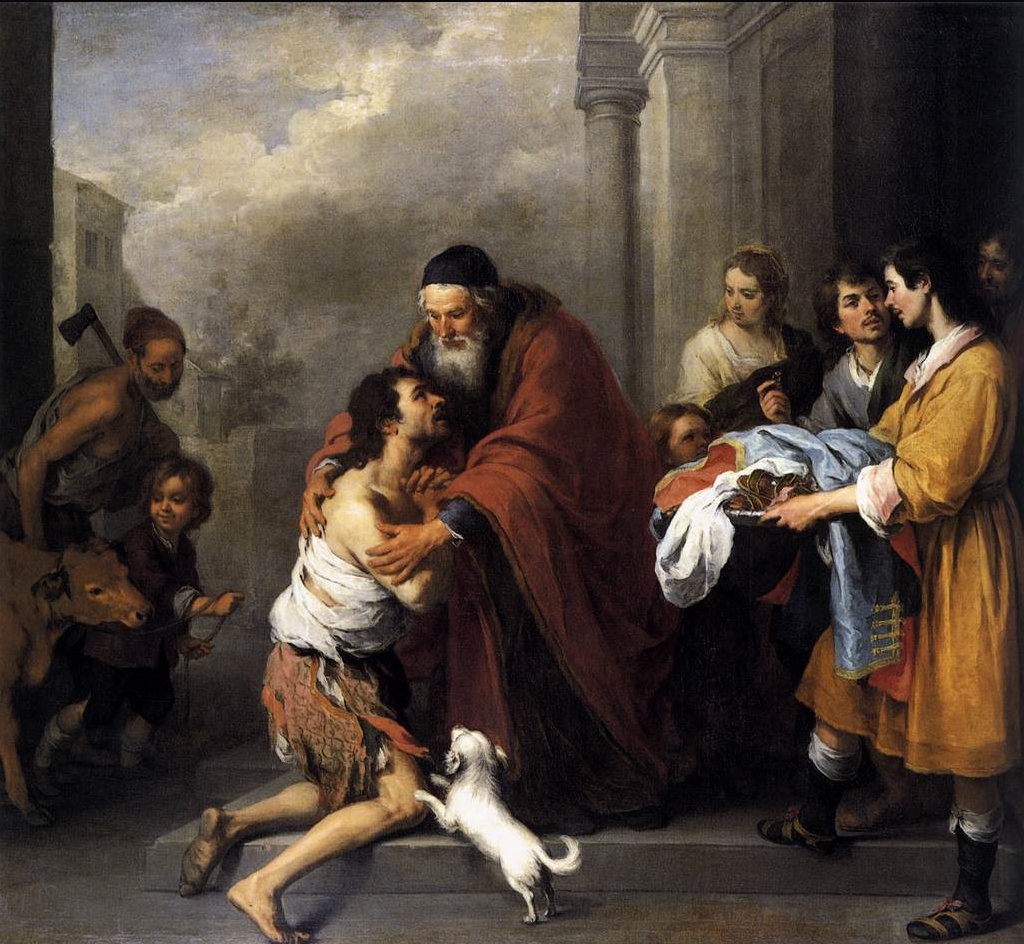
MURILLO, Bartolomé Esteban
Return of the Prodigal Son
1667-70
Oil on canvas, 236 x 262 cm
National Gallery of Art, Washington
Return of the Prodigal Son
1667-70
Oil on canvas, 236 x 262 cm
National Gallery of Art, Washington

ROSA, Salvator
The Prodigal Son
1651-55
oil on canvas, 254 x 201 cm
The Hermitage, St. Petersburg
The Prodigal Son
1651-55
oil on canvas, 254 x 201 cm
The Hermitage, St. Petersburg
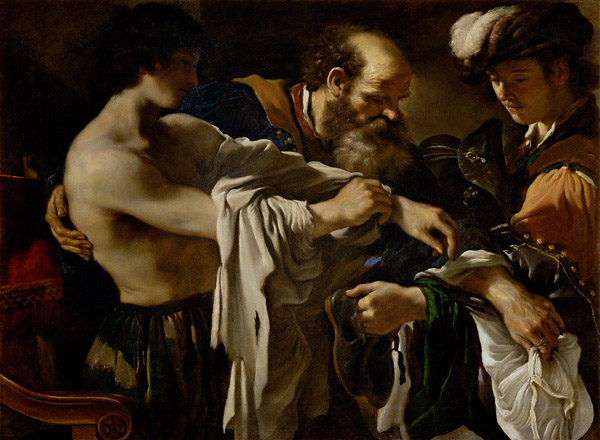
Return of the Prodigal Son
Guercino
1619
oil on canvas, 107 x 143.5 cm
Kunsthistorisches Museum, Gemäldegalerie
Guercino
1619
oil on canvas, 107 x 143.5 cm
Kunsthistorisches Museum, Gemäldegalerie




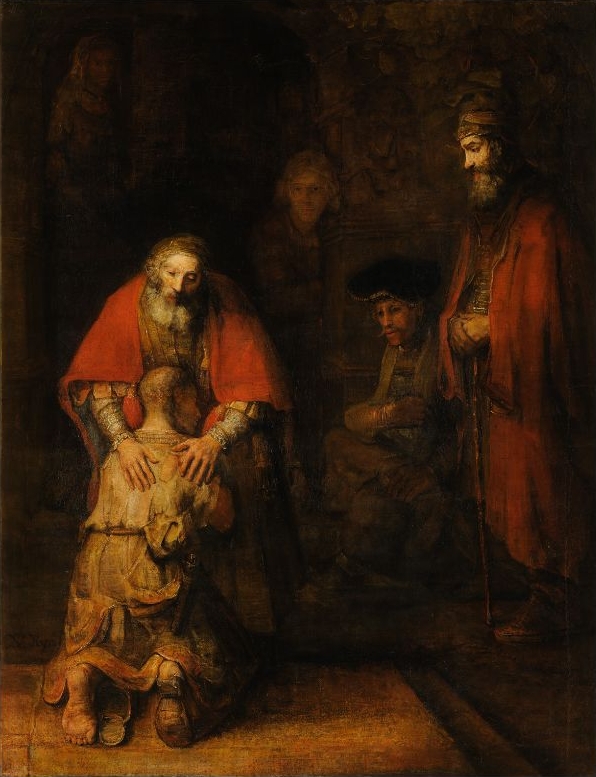
No comments:
Post a Comment